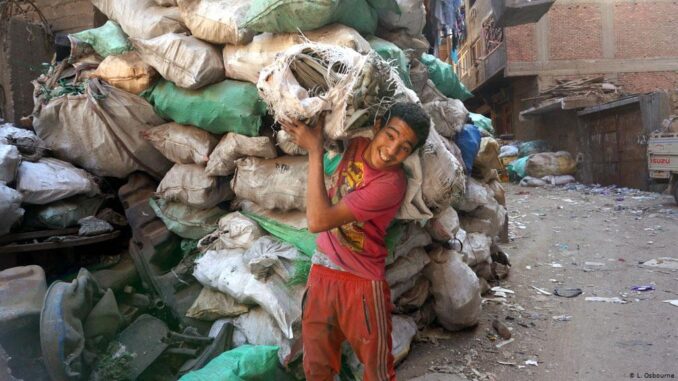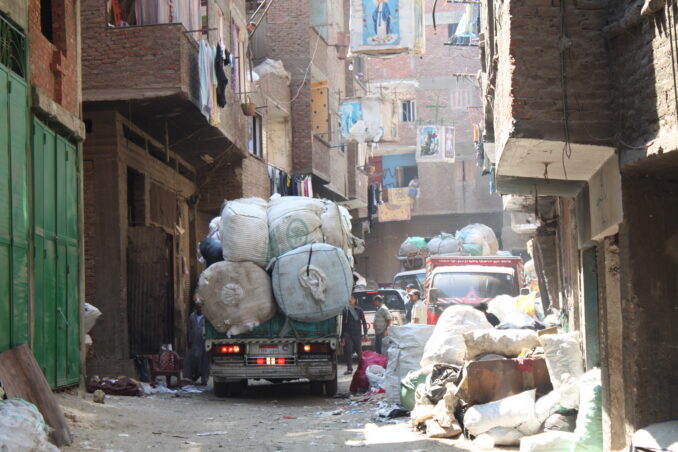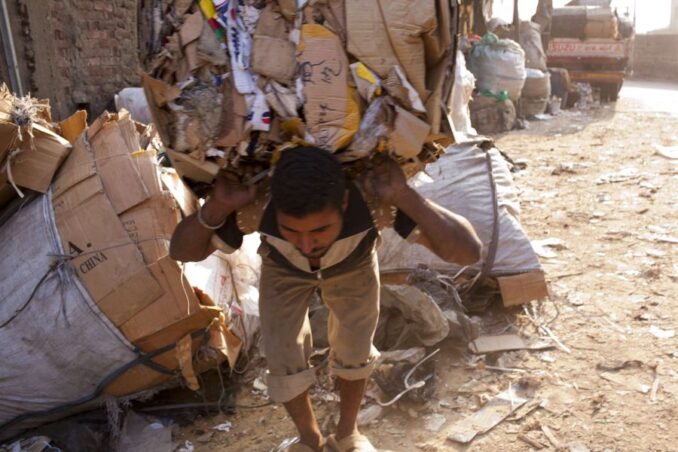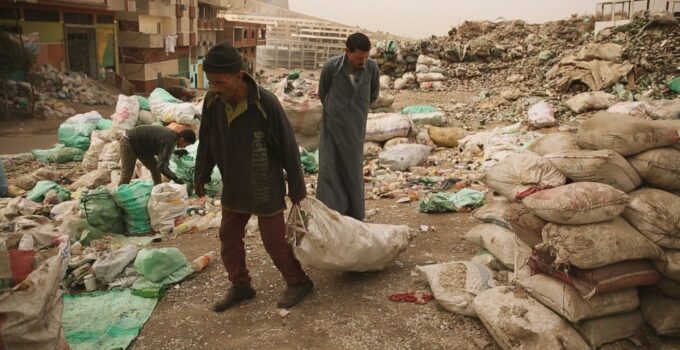Cairo, the cradle of human civilization, is one of the most densely populated cities in the world. There are nearly 15 million people living in a narrow area surrounded by deserts and Gobi. Such dense crowds and old urban construction, It makes Cairo work like an overloaded machine in all aspects, traffic, logistics, and countless urban garbage.
You can almost observe with the naked eye that its gears are biting hard, and the mismatched chain and parts are barely tied together. In such a chaotic and self-contained urban space, it is almost impossible to properly recycle garbage.
The old city center of Cairo, opposite the famous attraction Saladin Citadel, has an inconspicuous hillside. You will hardly notice its existence when you pass by by car or even on foot. This mountain is called “Mokattam”. The terrain left by modern earthquakes is undulating, and the arched hillside covers this area from three sides, which makes its geographical location hidden and prominent. For many anthropologists and Egyptian scholars, the charm of this place is no less than that of the pyramids.
Like Hong Kong, the legendary Kowloon Walled City that has been wiped out, Trash Mountain is a very special urban wonder, a wonder that belongs only to this kind of ancient city.
Zabaleen people live in this mountainous region

Source:dw.com
It is located in the heart of Cairo. It is not only the world’s largest artificial garbage disposal center, but also the residence of the largest number of scavengers in North Africa-the “Zabaleen people”, and on the top of this mountain, the Middle East is hidden The largest open-air church, the cave church.
From the time of the Pharaohs, the ancient Egyptians were very proficient in urban construction. Agriculture, irrigation, animal husbandry, but in terms of garbage disposal, it is as simple and rude as modern people—throwing garbage out of the place of residence.
The garbage mountain is located on the outskirts of the former ancient city of Cairo. From the excavated ruins of the old city, there are countless ancient garbage buried deep. Some archaeologists jokingly call this phenomenon the “Atlantis in the garbage”. Sicheng”, the ruins are mixed with the ashes of the dilapidated city. Garbage is deposited and filled in this city from generation to generation like annual rings. Above it, new cities are expanding and developing, and dwellings, city walls, and rubbish are gradually buried deep underground over time.
It may be unbelievable, but two-thirds of Cairo’s municipal waste is handled by Zabaleenese. In the early morning, they go to their employers or communities to collect garbage from house to house. This work is very hard. Most old-fashioned apartments do not have elevators. Sometimes, they need to climb thousands of stairs back and forth in several communities a day.
The garbage is transported to a trolley or truck, and then transported back to Mokattam Mountain for a long distance, and then sorted and processed. The traffic congestion in Cairo is very serious. They usually need to rush the trash back before the morning rush hour or during the evening rush hour. Therefore, tourists and even locals rarely encounter them, and they are rarely aware of the existence of this group of people. To this city, they are invisible people.
The garbage truck seems to be overwhelmed

Source:commons.wikimedia.org
Mokattam is both their place of residence and their workplace. Taking a family as a unit, the father or eldest son is responsible for collecting, transporting and selling garbage, and the second son, mother and children are responsible for sorting and sorting the garbage. There are five internal organs in the narrow living space, including schools, churches, hospitals, shops and cafes. Except for work needs, Zabaleen people rarely go out of this area. They naturally form a closed ecosystem here.
Life here is undoubtedly hard. All the urban garbage in Cairo is crowded on this hill. The roads are winding and narrow, and can only accommodate garbage trucks and tugs. The church members who go to the church on the top of the hill need to change to minibuses or walk to reach it.
They make full use of the narrow space. There is almost no gap between the buildings and the stores are crowded together. There are Christian decorations between the buildings and the outer layers of many houses are painted with bright colors. He cut his hair on the left, turned around and ate on the right. The cafe simply spread out on the road at the door. Although conditions did not allow, they still lived in this chaos in an orderly manner.
Today Cairo is dilapidated, but full of vitality. The garbage mountain and this ancient scavenger job will eventually disappear into the city’s torrent. The Zabaleen people are locked in between the past and the future of this ancient city. While struggling to make ends meet, their future prospects are also their greatest threat.

Source:peterdench.com
Their compromise and improvement of the city have not received the respect and attention they deserve. Although they are in the city center, they are actually completely outside Cairo. Fortunately, nowadays, more and more media have begun to pay attention to this special group of people. Garbage mountains and cave churches have also become adventurous places for adventure enthusiasts in the world. I hope that these focus will bring them more opportunities and changes, and allow the children here to get out of this closed mountain of destiny.
If you plan to visit Egypt, make sure get your travel visa at VisaExpress





